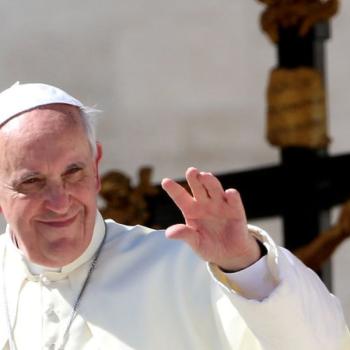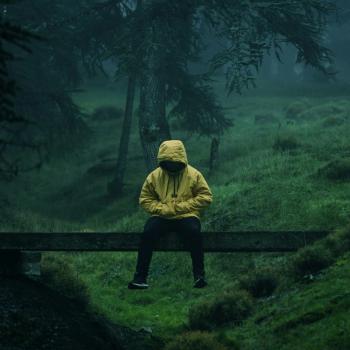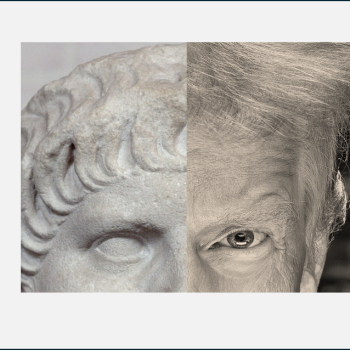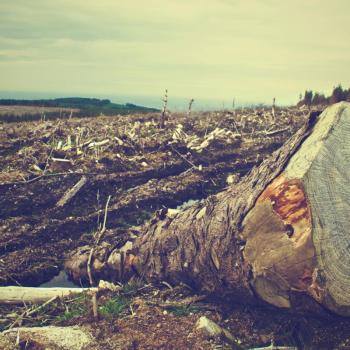A rainbow is more than just prism-droplets of light and color. It’s an eternal symbol of God’s desire for peace with Creation and humanity.

Here are ideas for reading and preaching Genesis 9:8-17, the story of God’s rainbow covenant with Creation, and Mark 1:9-15, about Jesus’s baptism, wilderness temptation, and inaugurated ministry. This is part of the EcoPreacher 1-2-3 series to equip preachers and congregations for engaging the Bible through an ecological lens. These texts are assigned as part of the Revised Common Lectionary for the First Sunday of Lent in Year A.
Eco-Exegesis
Eco-exegesis is a method of interpreting the biblical text through a green lens using the principles of ecological theology.
Genesis 9:12-13
God said, ‘This is the sign of the covenant that I make between me and you and every living creature that is with you, for all future generations: I have set my bow in the clouds, and it shall be a sign of the covenant between me and the earth.’
Drawing on the tradition of rabbinic scholarship, Rabbis Yonatan Neril and Leo Dee explain the connection between rainbows and responsibility. They note that “the symbolism of the rainbow is its multiple colors in one cohesive structure.” Thus, God’s covenant for peace is “represented by this eternal symbol of diversity” (Eco Bible, 24). What a fitting symbol, given the diversity of life on this planet which is interlinked into complex ecosystems that science is only beginning to understand!
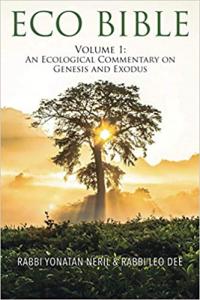
Rainbow as a symbol of peace
Another aspect of the rainbow is revealed by Nachmanides, a rabbi who lived in 13th century Spain. He noted that for ancient cultures that used bows and arrows for war, holding an upside-down bow aloft indicated the desire for peace. So, when humanity sees this colorful bow inverted in the sky, it “testifies to the Creator’s intention for life on our planet to continue to exist. It is a sign that God desires the existence of the world and not its destruction” (Eco Bible, 25).
Interestingly, however, the rainbow is only half the picture.
It needs humanity’s bow to complete the circle of peace, reconciliation, healing, and wholeness. “God can pledge not to destroy humanity, but since God created humanity with freedom of choice, God cannot guarantee that humanity will not destroy itself’” (Eco Bible, 25, quoting Rabbi Shlomo Riskin).
But not destroying ourselves seems to be a challenge that we are facing.
Whether it’s polluting the water we drink, churning out plastic that turns into waste which finds its way into our bloodstreams, or using chemicals that kill entire colonies of bees which pollinate our food, we appear to be in a constant battle against the Earth. And when it comes to the climate crisis, “through our consumption, it is as if we are shooting carbon arrows into the atmosphere, inadvertently waging war on God’s Creation” (25).
Mark 1:10-11
And just as Jesus was coming up out of the water, he saw the heavens torn apart and the Spirit descending like a dove on him. And a voice came from heaven, ‘You are my Son, the Beloved; with you I am well pleased.’
Mark I. Wallace notes that “In the story of Jesus’ baptism in the four gospels, the Spirit Bird, an earthen life-form, came down from heaven as a dove” (Green Christianity: Five Ways to a Sustainable Future, 43). Such an image hearkens back to the story of Noah sending a dove across the water to find a sign that the water had receded and new life had begun (Gen. 8:6-12). Even further back, God’s Spirit moved over the face of the waters at the beginning of Creation (Gen. 1:2).
Spirit and flesh, water and light
Thus, the incarnation of Jesus as a being of human flesh is met with God’s Spirit which takes on animal flesh right there beneath the sky breaking open with heavenly light. Just as it happened with Noah. Just as it happened at the beginning of Creation. This means that Christian baptism connects us with the Divine, with each other, and with the rest of the created world.
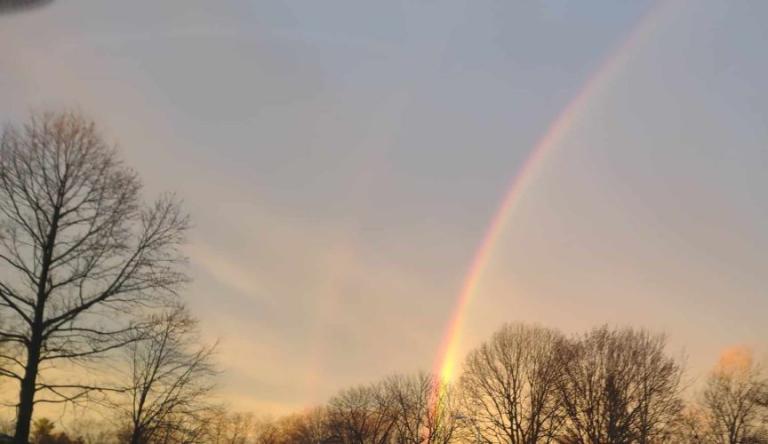
Yet, Wallace also points out that because the Spirit was incarnated in Creation and Jesus was incarnated in human flesh, they both suffer and die at the hands of humanity. “The Spirit, the God of flesh and feathers who is one with the natural world, suffers loss and deprivation just like Jesus” (Wallace, 45). Today, however, it’s not the physical cross but a kind of crucifixion of the Earth community that the Spirit suffers.
In other words, just as Jesus suffered and died on the cross for the sins of the world, the Spirit is continually crucified for the degradation of the world.
Our Lenten journey to the cross, then, must be one that communes with nature, cultivates empathy for its suffering and the suffering of humanity, and commits to being part of God’s eco-resurrection.
1 Eco-Idea
The Eco-Idea is one succinct statement that tells us who God is and/or what God does in relation to Creation and how we should respond as people of faith.
Our baptismal vocation leads us through a Lenten journey that encounters Creation, empathizes with the suffering of nature and humanity, and lives into God’s covenant for peace.
2 Eco-Questions
Eco-Questions are what we can ask to help a congregation draw out the implications of the Eco-Exegesis and Eco-Idea.
- How do you see the “arrows” of humanity’s war against God’s Creation in your local area? In what ways do you see water, land, wildlife, and air quality embattled because of humanity’s actions?
- What would it look like to live out our baptismal vocation by intervening in the cycles of commodification and consumption on behalf of the ecosystems that need protection? What are local environmental groups your church can partner with to “lift the bow” for peace with Creation?
3 Eco-Actions
Eco-Actions are ways that a congregation might respond to the Eco-Idea and Eco-Questions. One of these possibilities may have salience for your ministry context.
- Just as Noah’s work of preserving humans and animals paid off for future generations, discuss with your congregation what your church could do to make a difference for today’s children and tomorrow’s grandchildren. Identify short-term (one month), midterm (one year), and long term (five years) goals.
- Next time you see a rainbow, tell someone what you learned about its symbolism for peace with nature and what it means to you and your covenant to care for Creation.
- Prepare for Earth Month (April) and Earth Day (April 22) by planning a worship service with hymns, readings, prayers, and preaching that honor God’s Creation and call for a renewed commitment to faith-based environmental advocacy.
Read also:
Baptismal Water, Light, and Spirit: Our Ecological Vocation
Noah’s Ark and Climate Change: What Kind of Church Will We Be?
EcoPreacher 1-2-3 is a partnership between the Rev. Dr. Leah Schade and the Interfaith Center for Sustainable Development, publishers of Eco Bible, a Jewish ecological commentary on the Hebrew Scriptures. EcoPreacher 1-2-3 provides Creation-centered sermon preparation that is short, accessible, and based on a solid biblical foundation. To see other EcoPreacher ideas and to sign up to receive future EcoPreacher 1-2-3 installments, click here.
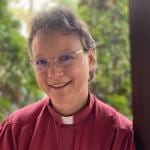
The Rev. Dr. Leah D. Schade is the Associate Professor of Preaching and Worship at Lexington Theological Seminary in Kentucky and ordained in the ELCA. Dr. Schade does not speak for LTS or the ELCA; her opinions are her own. She is the author of Preaching in the Purple Zone: Ministry in the Red-Blue Divide (Rowman & Littlefield, 2019) and Creation-Crisis Preaching: Ecology, Theology, and the Pulpit (Chalice Press, 2015). She is the co-editor of Rooted and Rising: Voices of Courage in a Time of Climate Crisis (Rowman & Littlefield, 2019). Her newest book is Introduction to Preaching: Scripture, Theology, and Sermon Preparation, co-authored with Jerry L. Sumney and Emily Askew (Rowman & Littlefield, 2023).




